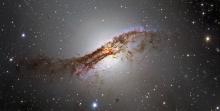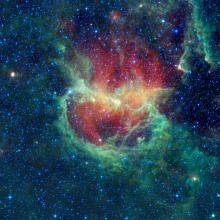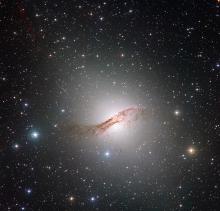Listen to today's episode of StarDate on the web the same day it airs in high-quality streaming audio without any extra ads or announcements. Choose a $8 one-month pass, or listen every day for a year for just $30.
You are here
Przybylski’s Star
Some stars are classified as “peculiar.” That’s because they show odd mixtures of chemical elements. They have higher amounts of radioactive elements and of rare earths — the kinds of things used in electric-car batteries.
One star stands out as the most peculiar of all: Przybylski’s Star, named for the astronomer who discovered its bizarre nature. It’s about 350 light-years away, in Centaurus, which pokes above the southern horizon at nightfall.
Some elements are common among the stars, while others are quite rare. And Przybylski’s Star shows a complicated brew of elements unlike any other star’s.
It has very low levels of iron, nickel, and other metals — as little as one-tenth the level seen in the Sun. But it has high levels of “rare earths” — elements that just don’t show up in other stars. It also appears to have high levels of some radioactive elements that decay in a few thousand years or less. Such elements should have long since vanished from Przybylski’s Star, which is about a billion and a half years old.
Scientists haven’t yet explained what’s going on. One possibility is found in the star’s rare combination of qualities: It’s hot, it has a strong magnetic field, and it spins very slowly. That could “levitate” atoms that normally would be mixed inside the star, bringing them to the surface where we can see them.
Whatever the explanation, Przybylski’s Star will remain perhaps the most peculiar of all stars.
Script by Damond Benningfield






